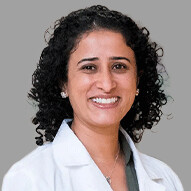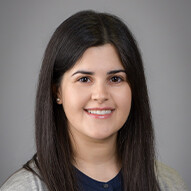Pediatric malformations of cortical development (MCD)
At Children's Health℠, our Level 4 Epilepsy Center offers care from some of the nation’s most experienced pediatric neurologists and neurosurgeons. These experts specialize in helping children with epilepsy and other issues, and our team has helped many patients with malformations of cortical development (mal·for·ma·tion - of - cor·ti·cal - de·vel·op·ment). This gives us the expertise and experience to give your child the best opportunity for a good outcome.
What are pediatric malformations of cortical development (MCD)?
Malformations of cortical development, sometimes called MCDs, are a group of disorders that disrupt how the brain normally functions. In particular, they disrupt the part of the brain that's called the cerebral cortex. Many of these conditions cause children to have seizures, and some cause developmental problems and other issues.
The cortex is the outer layer of the brain that gives the brain its folded, wrinkled appearance. The cortex controls all kinds of different functions, including how we think, move and speak. When the brain is developing in the womb, brain cells (neurons) form. These neurons migrate (move) to where they need to be during a baby’s early development, before birth.
An MCD happens when the neurons are abnormal or don’t migrate to the right place. This affects how the brain works.
At Children’s Health, your child will work with a team of neurologists (brain specialists), psychologists and genetic counselors. Together, we have a high level of experience to diagnose children with this condition. We remain the area’s only center to perform the most advanced procedures and therapies for epilepsy.

What are the different types of pediatric malformations of cortical development (MCD)?
When the brain develops, neurons are first “born” in one place. Then those cells migrate to a specific part of the brain. In malformations of cortical development, the neurons don’t end up in the right place, or the cells themselves have problems.
Malformations of cortical development are divided into different groups based on when they happen as the brain develops. The three types have different symptoms, but all three types can cause seizures. For that reason, neurologists in our Pediatric Epilepsy Center typically lead the care for these children.
Changes in brain cell organization - Some MCDs involve an overgrowth of neurons. In others, neurons die prematurely. Depending when these changes happen, they can lead to three main conditions:
Microcephaly - a small head and a small brain volume
Megalencephaly - increased size or overgrowth of the brain
Cortical dysplasia - a disorganization of the neurons in the brain
Neuronal migration defects - After neurons are born in the brain, each neuron has to move to a specific area in the brain. Neuronal migration defects happen when something goes wrong with this process. There are four types of neuronal migration defects:
Heterotopia - when clusters of normal neurons end up in the wrong part of the brain
Lissencephaly - when the cortex of the brain is thicker than it’s supposed to be, with abnormal folding that gives it a smooth appearance
Polymicrogyria - where the brain has too many small folds
Schizencephaly - a rare type that causes a slit to form in the brain, lined with abnormal cells (polymicrogyria, heterotopia or both)
What are the signs and symptoms of pediatric malformations of cortical development (MCD)?
Seizures and epilepsy - due to irregular electrical activity in the brain
How are pediatric malformations of cortical development (MCD) diagnosed?
To diagnose a malformation of cortical development, your child’s doctor will talk with you and your child and do a full physical exam. The doctor may order additional tests including:
Genetic and metabolic testing - A genetic test can identify gene changes that cause specific conditions. Metabolic testing can reveal certain metabolic disorders.
Electroencephalogram (EEG) - This test can help doctors determine where seizures are coming from in the brain. An EEG is performed by placing electrodes on the scalp and recording the electrical activity of the brain.
MRI - This scan uses strong magnetic fields to make images of your child’s brain to show lesions or structural problems.
In some cases, we can identify malformations of cortical development even before birth. Doctors in our Fetal and Neonatal Neurology Program offer advanced diagnosis and treatment of even the youngest babies. Our team can consult with your family, even before your baby is born, to help you prepare to have close, personalized care for your baby.
What causes pediatric malformations of cortical development (MCD)?
All types of malformations of cortical development or MCDs happen when the brain’s structure is different from a typical brain. MCDs can result from many different things, such as:
Genetic causes
Infection in the pregnant parent
Metabolic causes (changes in how the brain processes chemicals)
Vascular changes (changes in the brain’s blood vessels)
How are pediatric malformations of cortical development (MCD) treated?
Your child's treatment will depend on their individual condition and symptoms. We offer all types of therapies, including some that aren’t available in other centers in our area.
Anti-seizure medications work to control seizures. These medications can help individuals with epilepsy lead a normal life.
However, seizures can be difficult to control with medication. An estimated 40% to 50% of drug-resistant epilepsy is caused by some malformation of cortical development. When medications don’t work, we have many other options for your child.
Surgery can treat malformations of cortical development to minimize or stop seizures, including seizures that don’t respond to medication. We perform surgery to remove problem-causing tissue or implant stimulators to stop seizures. Your child may receive:
Open resection - The surgeon performs an open surgery to remove the part of the brain where seizures start.
Laser interstitial thermal therapy (LITT) - This less-invasive surgery requires only a small hole in the skull, compared to a larger incision for open surgery. The surgeon uses a laser probe to remove tissue.
Vagal nerve stimulation (VNS) - We implant a small device that looks like a pacemaker under the skin in the chest. A small, flexible wire goes to the vagus nerve in the neck. The VNS can reduce the frequency of seizures. A patient or caregiver can also activate the VNS to stop seizures once they start.
Responsive neural stimulation (RNS) - The surgeon places electrodes in the brain where we believe seizures are coming from. The RNS device monitors your child’s brain activity continuously. When it recognizes a seizure, the device automatically sends a signal to help prevent the seizures before they even start.
Deep brain stimulation (DBS) - The surgeon places wires that connect a neurostimulator device in the chest to the brain. These wires carry an electrical signal to that part of the brain to block abnormal signals that are triggering the seizures.
Comprehensive care can help your child live a full, active life. Your child’s doctor may recommend different therapies, including:
Neurodevelopmental and behavioral screening to understand how an MCD is affecting your child’s brain development or behavior
Specialized diet to reduce seizures, such as the ketogenic diet, modified Atkins diet or low-glycemic index diet
Support such as occupational therapy (OT), mental health counseling and school services
Pediatric malformations of cortical development (MCD) doctors and providers
At our Level 4 Pediatric Epilepsy Center, your child has access to the latest treatments for seizures and other problems related to malformations of cortical development.
 Jennifer Thomas, MDPediatric Neurologist
Jennifer Thomas, MDPediatric Neurologist Dallas Armstrong, MDPediatric Neurologist
Dallas Armstrong, MDPediatric Neurologist Wilmot Bonnet, MDPediatric Neurologist
Wilmot Bonnet, MDPediatric Neurologist Michael Dowling, MDPediatric Neurologist
Michael Dowling, MDPediatric Neurologist Stephen Elliott, MDPediatric Psychiatrist
Stephen Elliott, MDPediatric Psychiatrist Saima Kayani, MDPediatric Neurologist
Saima Kayani, MDPediatric Neurologist Michelle Machie, MDPediatric Neurologist
Michelle Machie, MDPediatric Neurologist Angela Price, MDPediatric Neurosurgeon
Angela Price, MDPediatric Neurosurgeon Rana Said, MDPediatric Neurologist
Rana Said, MDPediatric Neurologist Lauren Sanchez, MDPediatric Neurologist
Lauren Sanchez, MDPediatric Neurologist Deepa Sirsi, MDPediatric Neurologist
Deepa Sirsi, MDPediatric Neurologist Afsaneh Talai, MDPediatric Neurologist
Afsaneh Talai, MDPediatric Neurologist Cynthia Wang, MDPediatric Neurologist
Cynthia Wang, MDPediatric Neurologist